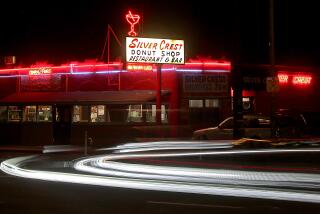In the pop-up community, every day is a scramble for chefs. Sometimes, tech is the answer

As restaurant jobs have disappeared during the pandemic, there has been a boom in informal food pop-ups in Los Angeles, a rapidly evolving culture that has brought us smoked brisket and roti filled with chicken curry, fried bananas with salted caramel and lemon olive-oil cake. Every week, it seems, chefs post new menus listing creative, compelling takeout fare.
For the food-obsessed in pursuit of a great meal, it’s been an opportunity to experience some of the best food Los Angeles has to offer. For chefs and bakers, however, it’s been a time of great uncertainty and stress. Many started pop-ups by taking orders through direct messages on Instagram, which can quickly lead to chaos and seemingly endless questions: How do you streamline menus and orders? What’s the best way to deal with payments?
The exorbitant fees charged by some delivery apps have spurred chefs and bakers to embrace new technology like never before. Some of them are using platforms and apps such as Minimart and Google Voice to help streamline their businesses. They’re keeping expenses down by sharing resources, doing their own deliveries and using services like Venmo to receive payment.
One thing is consistent in the pop-up community: Every day is a scramble.
Like most of her peers, Sasha Piligian, who christened her cottage bakery May Provisions, started taking orders through direct messages on Instagram. Her customers were a mix of followers and others referred by friends who were familiar with her work as a former pastry chef at Sqirl. They ordered cakes in a conversational manner; maybe they were interested in lemon or perhaps chocolate, but ultimately they trusted her to come up with something special.
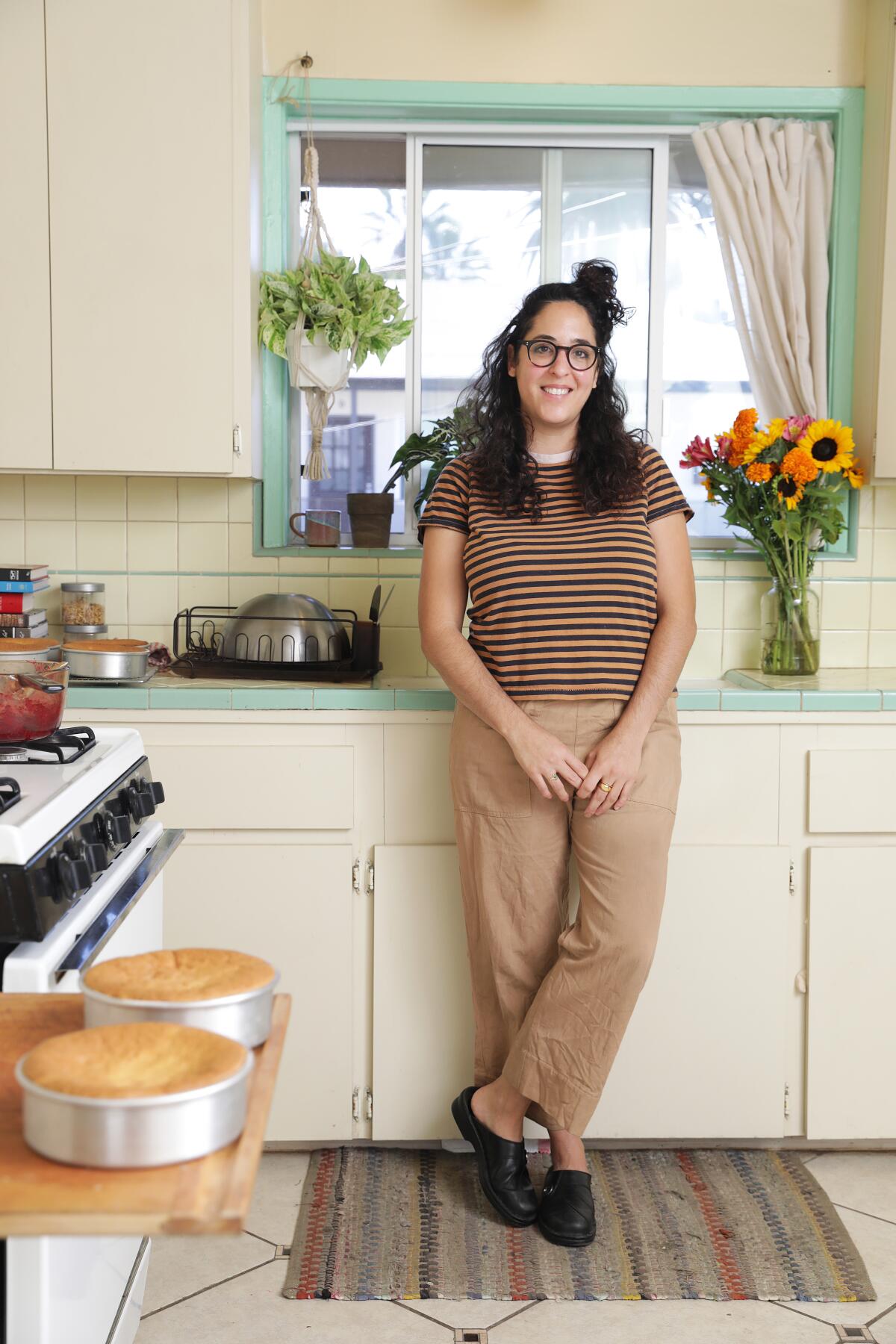
It was “very free and fluid,” Piligian says. “But I quickly realized that I really needed to streamline, because it was making my life on the backend really chaotic.”
She opted to try Minimart, a platform for independent food businesses to host menus, take orders and communicate with customers. (Piligian uses Venmo for payments.)
Minimart was launched last March by Eli Silverman, a former cook and the founder of restaurant website company Resto. At first, the service was free while Silverman expanded its features; now, it costs $7 a month plus a 1% commission on sales.
Website hosting service Squarespace charges $18 per month. Square does not charge a monthly fee for a simple Square-branded page that includes ads but rates for customers who want a custom domain and no ads start at $12 a month. Chefs who choose one of these two services also have to pay 2.9% of all credit card charges (plus 30 cents) to the hosting platform.
::
Danielle Duran-Zecca, who operates Mexican-Italian pop-up Amiga Amore out of her home in Glendale with her husband, Alessandro Zecca, has navigated through platforms to see what’s right for her business. Her website is powered by Wix, which costs her $324 a year in addition to a 3.5% charge on every order. She says the platform allows her to showcase everything she offers, including larger catering orders and her El Chorro hot sauce.
Amiga Amore was briefly on Grubhub in November (during a free trial offer), when Duran-Zecca and her husband ran their pop-up out of Nativo, a Highland Park cocktail bar, but they dropped the service because of the company’s high service fees.

Duran-Zecca recalls a day when she hadn’t yet accepted a specific order but suddenly a Grubhub driver arrived to pick it up and was yelling at her to move quickly. In the meantime, Grubhub didn’t answer her calls.
“A lot of those platforms, they also sacrifice your food,” Duran-Zecca says, referring to the delivery services that are currently dominating the market. “They pick up like four orders, so instead of arriving in 30 minutes, it arrives in an hour, and it’s not the restaurant’s fault when it arrives cold, but what are you going to do?”
Before Nativo went on hiatus because of state-mandated restaurant closures at the end of November, she said she was researching Tock’s To Go product, which facilitates pick-up orders for a 3% fee, a rate Zecca feels is appropriately low. Being on Tock, she says, would position Amiga Amore in the company of high-caliber restaurants like n/naka and Connie & Ted’s and grant them greater control over the food. “We put a lot of care into the product that we put out, and we don’t want it to be a mess,” she says.
Tock, however, only accepts clients with bricks-and-mortar locations, so when the Zeccas cook from home — where they’ve recently been making pizzas with toppings including chorizo, Oaxaca cheese and carnitas — they handle pick-up and delivery on their own.
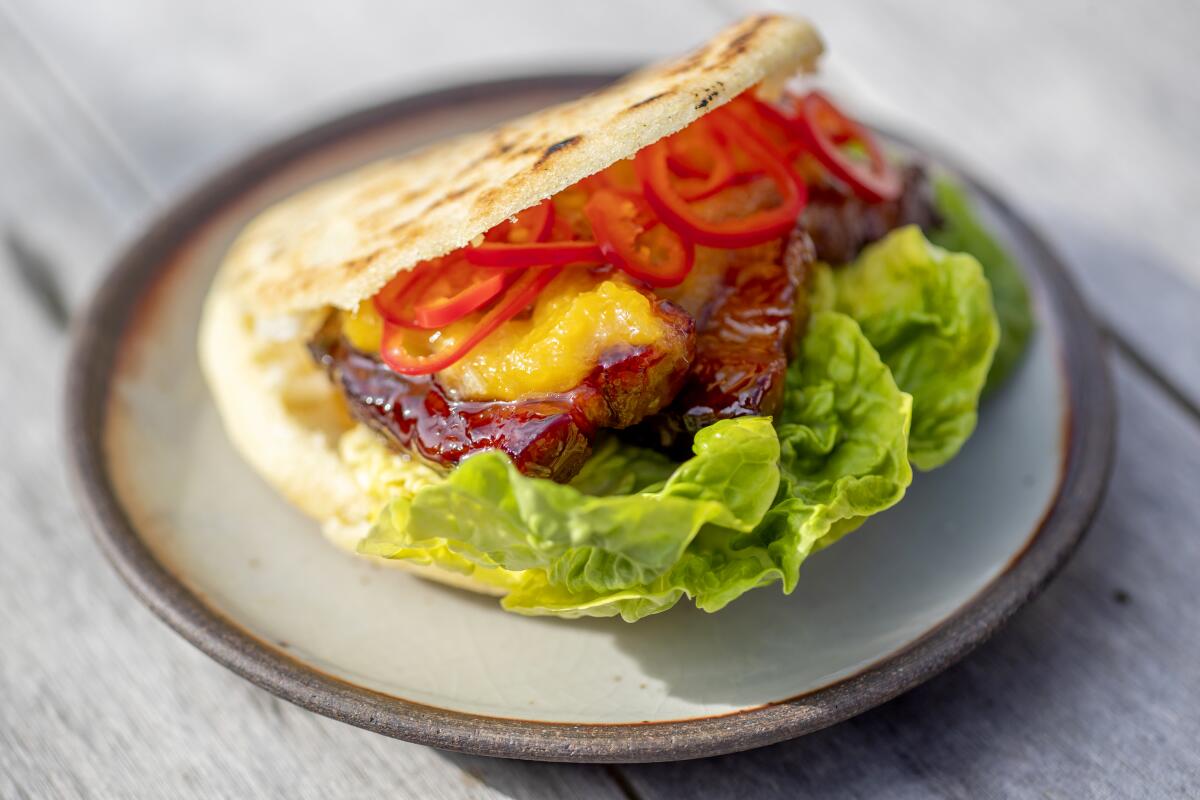
Many pop-ups offer pick-up only or handle their own deliveries, a time-consuming task in a sprawling metropolis. Isabel Carmona, who launched her arepa pop-up VZLA after losing her job at the now-closed MTN in Venice, arranges her own deliveries. “I feel like I’m so small that I cannot be rejecting orders, so what I do, it’s crazy,” she says.
Her father-in-law helps deliver, and she hired a third person as well. The three of them divide orders by location: one handles the Westside; another heads to the South Bay and downtown; and the third covers areas like Silver Lake and Pasadena. Carmona’s husband plans routes using Google Maps. For VZLA customers, delivery costs only $1.99. “Sometimes it screws us because people live so far away,” Carmona says.
Sarah Ghattas of sourdough micro-bakery Flour Culture recently started charging $5 for deliveries. She bakes an average of 50 loaves a day in addition to focaccia and sweets, then works with her partner to drop them off with locals in Arcadia or as far as Beverly Hills. “We couldn’t keep up,” she says, so the fee was an incentive for people to opt for pick-up instead of delivery. Eventually, Ghattas, another Minimart client, hopes to open a bricks-and-mortar bakery business, since her capacity to expand from home is limited. (Cottage food laws in California enforce a $50,000 cap in gross sales.)
“Between all of your costs of goods and time, and if you have an employee, I don’t see that as sustainable for a business continuing to grow,” she says.
::
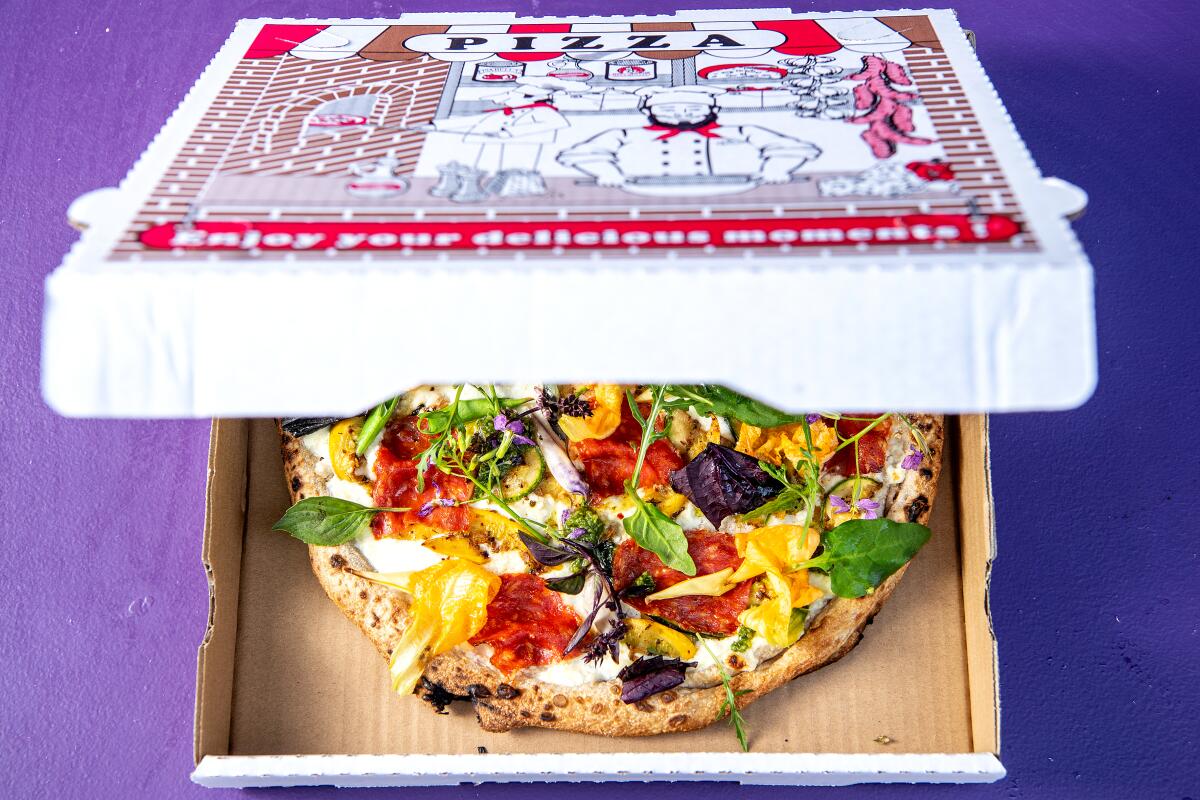
When pizza fans place an order for a Brandoni Pepperoni pie topped with stinging nettle pesto and truffle burrata, they communicate with chef Brandon Gray over text message. Gray operates his pizza pop-up using a free phone number he got from Google Voice, which is listed on his website and Instagram profile.
“Think of it like a maître d’ of a restaurant,” he says. “It’s personalized and you’re actually talking to someone.”
Gray likes how texting gives him the ability to provide hospitality along with his pies. The only problem is he’s responding to the majority of the messages himself, with some help from a friend, which takes a lot of time. They’ve been talking to a software company about building an app that would automate some of that work while retaining a human element (restaurateurs would curate automated responses in their own voice).
“The profit margins in restaurants are already extremely low [and] if you have to pay someone else to do something, it sucks,” Gray says. “That’s why software that’s essentially exactly what we’re doing but a little bit more automated could be big for businesses like mine.”
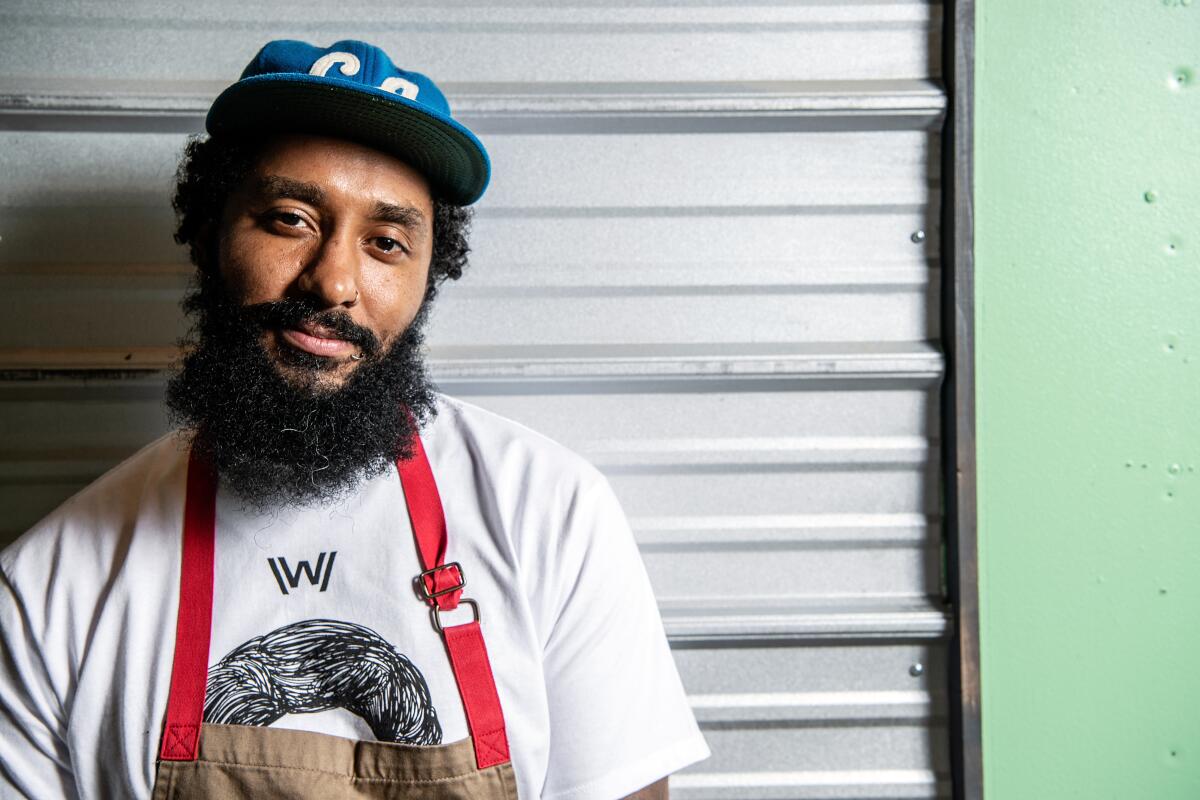
As pop-up chefs navigate obstacles and consider the evolution of their businesses, they’re relying on one another for advice and promotion. “I’m always talking to people on Instagram, even [people] I’ve never met in person, who are doing pop-ups or something kind of similar and just comparing how we’re figuring it out and running our businesses,” says Colin Fahrner, who, along with Katie Reid Burnett, slings cheeseburgers and apple hand pies at various locations around the city under the moniker Yellow Paper Burger. “People are super helpful and open with sharing their knowledge of how they’ve done it, what’s worked for them.”
Ghattas, who worked in the wine industry in San Francisco and only baked as a hobby before moving to L.A. at the end of 2019, says she’s been welcomed with open arms to the baking and pastry community through her pop-up. “We’ve cross-promoted each other because we’re all in different parts of L.A., and it’s been pretty incredible,” she says.
Piligian agrees. “I think [the pop-up boom] has been a really great way for a lot more voices to be heard in the city. I love that I can buy bread from Hannah [Ziskin] or my friend Rose Wilde or from Bub and Grandma’s [bakery]. I like more variety and being able to support more people.” (Ziskin runs the cottage bakery House of Gluten; Wilde runs Red Bread bakery.)
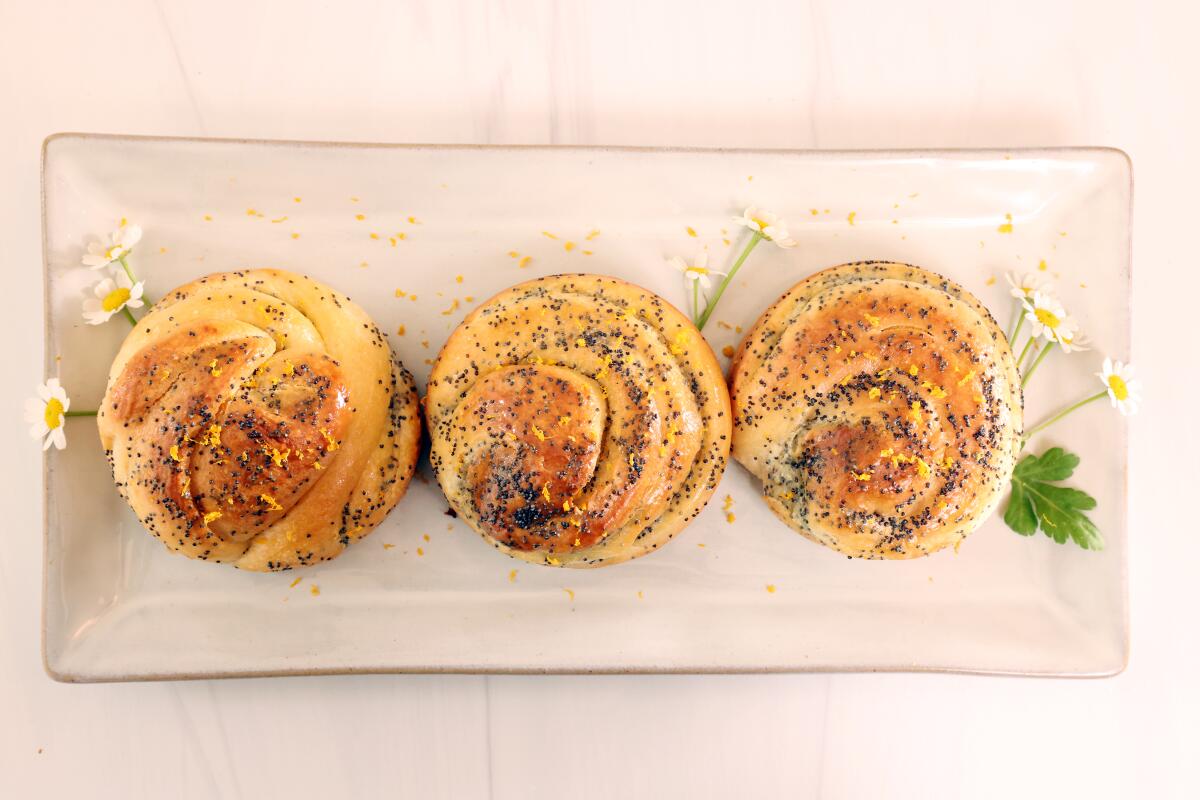
Not all of these pop-ups are financially sustainable for their proprietors, and many still rely on unemployment checks. Piligian says she can’t live off her business but she hopes to eventually. The evolution of May Provisions, she adds, will depend on customers continuing to support her bakery when some degree of normalcy has returned.
Duran-Zecca, who worked at restaurants such as Union in Pasadena and Le Coucou in New York, is grateful for the perspective she’s gained over the last nine months in terms of expenses and technological support. “Beforehand, any restaurant I worked at got on as many platforms as they could,” she says. “Now seeing it from a different standpoint, [the apps] take a lot. What do they really do to help us? Being financially aware of every single thing that goes into my business, I feel like wow, OK, there’s so many costs that you can avoid here.”
More to Read
Eat your way across L.A.
Get our weekly Tasting Notes newsletter for reviews, news and more.
You may occasionally receive promotional content from the Los Angeles Times.

